Acclimatise
on Kili


Unlike
some operators, we avoid the infamous four or five day
summit dashes, as this gives you a very low chance of
summiting, and a very high risk of mountain sickness.

As
you can see from the altitude graphic below, our expeditions
spend seven days on the mountain and four days around
4000m before the summit bid.

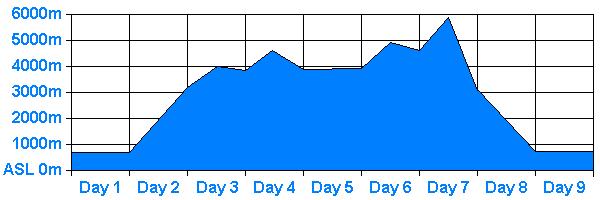

Our
acclimatisation programme works. We are very aware of
the symptoms and effects of altitude sickness (AMS), and
will be briefed on this.

Buy
the Kili map


|
 |
| Group
experience |
 |
 |
Our
formula is to restrict the group sizes, so that
there are a maximum of 10 clients. The small group
sizes enable us to run specialist ascents, where
the group can bond well, and each expedition member
has great access to all the Icicle staff, local
guides and porters. On the summit day the guiding
ratio is one guide per two clients. This is more
intimate than the mass group commercial style expeditions
run by some operators, where the individuals needs
and speeds cannot be catered for. 
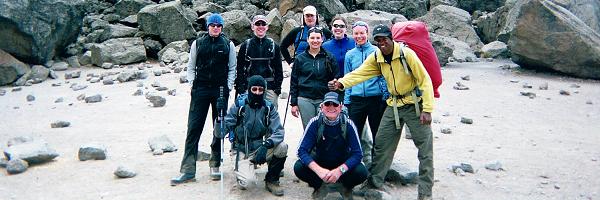

Although
you require no previous mountaineering experience
for this expedition, you are advised to be a competant
trekker who is familiar with up to six hour days
with 1300m height gains. As you will note from the
itinerary, this expedition is quite intensive in
order to ensure your acclimatisation. Upon booking
you will be sent an expedition dossier & training
training schedules. |
|
 |
Kili
climate change


The
weather patterns on Kilimanjaro are changing, and
the icefields are shrinking. Generally it is not
necessary to use an ice axe or crampons on the mountain.

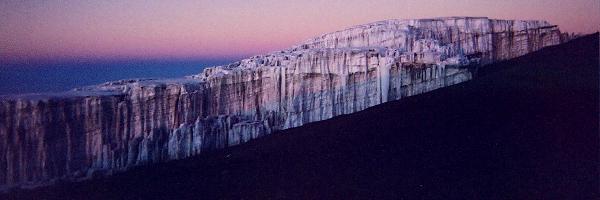

The typical weather at present is clear mornings,
then an afternoon cloud build up (often with short
shower), then the clouds break in the evening and
over night. This pattern explains why the day of
the summit bid commences at midnight to take advantage
of the clear skies.

Kili
guidebook


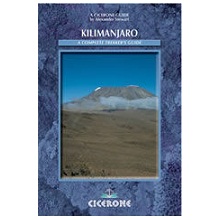 |
|
 |
| Guides
and porters |
 |
 |
For
every two clients on an expedition, we use one local
guide and up to three porters. The porters
carry these tents and the sleeping
bags, as well as the mess / cook tents and food,
so you need not worry about carrying any major loads
each day. When
you stay in camps on Kilimanjaro, the tents are
high quality tents designed for altitude use, such
as the Mountain Hardwear Trango series tents. The
porters pitch and strike the tents for you each
day.

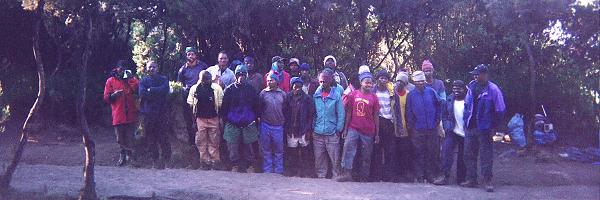

At
each camp site on the mountain, there are basic
toilet facilities. We
recommend you carry only a 20 litre bag at most,
the size of a typical day sack for hillwalking in
the UK. We have a head local guide, who is ably
supported by a regular team. We ensure that all
guides and porters are suitable fed and clothed,
and have forged close links with the Kilimanjaro
Porters Assistant Project, www.kiliporters.org. |
|
 |
| Trip
food & water |
 |
 |
| A
key factor in the success of any expedition is its
how well rested and fed the team is. We have ensured
that the camps and porter services are as high as
possible. All the meals on the mountain are provided
throughout the expedition, so each day you are provided
with breakfast (porridge, eggs, sausages, toast,
fresh fruit), lunch (packed or cooked, such as spaghetti
bolognaise, fruit, cakes), afternoon tea (coffee
/ tea / hot chocolate, and biscuits), and a large
dinner in the evening (soup, main course, and dessert).
The cooks and porters supply hot water to wash before
meals, and they also carry extra drinking water
and supplies in case anyone runs out during the
day. We find that clients are always amazed by how
good and plentiful the food is, especially when
you round a corner and your lunch table is laid
out before you! |
 |
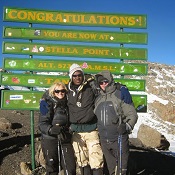 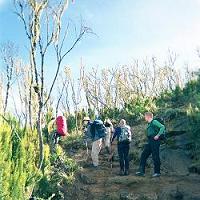 |
|

